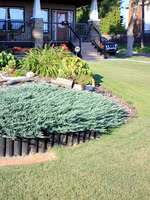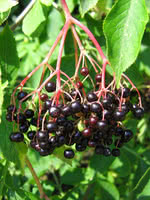Mon-Fri 9am - 5pm Mountain time
Creeping Juniper vs Black Elderberry
Juniperus horizontalis
Sambucus canadensis
NOT AVAILABLE THIS SEASON - MIGHT RETURN
NOT AVAILABLE THIS SEASON - MIGHT RETURN
Creeping Juniper is a low maintenance, spreading, ground cover shrub capable of growing in some of the worst soil and rocky conditions.
You will love this shrubs' pleasant fragrance and year-round color. A beautiful accent or foundation plant, Creeping Juniper has scaly foliage and is commonly used by landscapers to add texture under trees or flower beds. Consider planting Creeping Juniper in areas where grass is difficult to mow or maintain.
Black Elderberry is a deciduous shrub native to eastern North America. You can plant this shrub in moist areas and it will help stabilize your soil. You can also use it on rural properties anywhere you'd use a lilac.
Black Elderberries are considered to be partially self-pollinating. So while they will still produce some berries without cross-pollination, planting with another variety will increase yields. Consider planting with Ranch Elderberry or Bob Gordon Elderberry.
Warning: the seeds, stems, leaves, roots, and uncooked berries of the Black Elderberry are poisonous to humans when eaten in quantity. You should cook the berries to make them safe for human consumption.
Creeping Juniper Quick Facts
Black Elderberry Quick Facts
Toxicity: leaves, stems, and uncooked berries are poisonous to humans

